Medical expert of the article
New publications
Porridge for pancreatitis: semolina, oatmeal, millet, rice, wheat, buckwheat
Last reviewed: 04.07.2025

All iLive content is medically reviewed or fact checked to ensure as much factual accuracy as possible.
We have strict sourcing guidelines and only link to reputable media sites, academic research institutions and, whenever possible, medically peer reviewed studies. Note that the numbers in parentheses ([1], [2], etc.) are clickable links to these studies.
If you feel that any of our content is inaccurate, out-of-date, or otherwise questionable, please select it and press Ctrl + Enter.
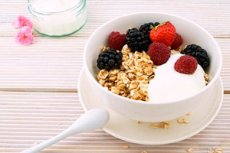
Pancreatitis is one of the severe and quite common diseases of the digestive system. And one of the important points in the therapy of such pathologies is considered to be adherence to a diet. Usually, doctors write in their prescriptions: diet-table No. 2 or No. 5, which are aimed at restoring the normal functioning of the gastrointestinal tract. Among the permitted dishes in these diets, porridge is always present. And this is not accidental, it is not for nothing that such food must be present in the diet of children. Porridges for pancreatitis ensure a normal digestive process, without overloading the pancreas and providing the body with the vitamins and microelements it needs.
But are all cereals so useful for this disease? Are there any cereal dishes that can harm the patient? How to properly cook cereals for acute and chronic pancreatitis? We will consider these questions in our article.
A little about the disease itself
Pancreatitis is a disease in which the inflammatory process is localized in one of the digestive organs - the pancreas. This organ is located slightly behind the stomach in its lower part, and when a person takes a horizontal position, it invariably ends up under the stomach, which is the reason for such an unusual name for the organ.
The pancreas, although not directly in contact with food, is still a very important organ of the digestive system. It takes an active part in the digestion of proteins, fats and carbohydrates entering the body with food, since it produces special digestive enzymes: lipase, amylase, protease, trypsin, insulin, etc.
When food enters the body, the pancreatic secretion is fed through a special duct into the duodenum, where food is converted into chyme, the nutrients from which are absorbed into the blood in the intestine, and all unnecessary is excreted from the body in the form of feces. Pancreatic juice, entering the intestine, breaks down food into components, promotes its better digestion and absorption, and participates in the processes of metabolism of various nutrients. Its benefits for the digestive process are invaluable.
But is it really that useful and safe for the pancreas itself? If for some reason the outflow of digestive juice is disrupted, it is retained inside the pancreas, over time it becomes more concentrated and begins to digest the walls of the organ itself. There is nothing incredible about this, because the pancreatic secretion contains digestive enzymes that can corrode any living tissue.
The inflammatory process in the pancreas can also be associated with premature production of digestive juice. Ideally, it should not stagnate in the organ. The production of pancreatic juice begins when food enters the body. Failures in the organ's work lead to the fact that enzyme production occurs between meals, which is fraught with stagnation and tissue irritation by its own enzymes.
When cholelithiasis becomes complicated, bile, which is an equally caustic digestive enzyme produced in the liver and supplied to the same duodenum, can also be thrown into the pancreas.
The cause of malfunctions in the pancreas and the outflow of specific secretions from it, in addition to structural anomalies, may be:
- alcohol abuse (90% of cases of acute pancreatitis),
- poor nutrition with a predominance of fatty and spicy foods, regular overeating
- obesity and overweight,
- cholelithiasis with complications,
- uncontrolled use of certain medications (various NSAIDs, some antibiotics and diuretics, glucocorticosteroids, etc.),
- a high content in the diet of foods rich in pesticides and harmful food additives with the letter "E",
- inflammatory pathologies of other gastrointestinal organs located nearby (stomach and duodenum),
- various infectious diseases,
- cardiovascular pathologies in which the blood supply to the organ is disrupted,
- allergens,
- development of diabetes mellitus (can be both a cause and a consequence of pancreatitis),
- the presence of parasites in the body (helminthiasis),
- injuries and surgical interventions in the functioning of the organ.
It is not surprising that the disease has become more and more popular lately. And yet, with such a number of causes, the probability of pancreatitis is higher in alcoholics, patients with gallstone disease and people with varying degrees of obesity.
The disease can occur in 2 forms: acute and chronic. The main symptom is pain, which can be localized (depending on the affected area, the pain is felt in the hypochondrium on the left or right side, under the shoulder blade, or has a girdle-like character) or reflected (radiates to the back, chest). In acute pancreatitis, the pain is strong and constant, in the chronic course of the disease it is paroxysmal and occurs mainly under load on the pancreas.
Other symptoms of the disease include changes in skin color, heaviness in the epigastrium, dyspepsia, bouts of nausea and vomiting, bowel movements (often pancreatic diarrhea, less often constipation), yellowish coating on the tongue, weight loss, etc.
Both acute and chronic pancreatitis need to be treated, because if this is not done, the disease will give complications in the form of an abscess or necrosis of the pancreatic tissue, the appearance of a false cyst, diabetes mellitus and even death. In addition, pancreatitis is accompanied by intoxication of the body, which negatively affects the health of other organs and systems of a person.
But if acute pancreatitis requires drug treatment and abstinence from food for 2-3 days, after which a diet is prescribed with restrictions on fats, carbohydrates, fried, spicy and salty foods for a certain time, required to restore the functions of the pancreas and stop the inflammatory process. Then with chronic pancreatitis, such a diet becomes a way of life.
One of the important components of the diet for pancreatitis is porridge. They are considered one of the main dishes for pancreatic disease. As soon as the attack of acute pancreatitis has been stopped, porridge can be gradually introduced into the menu, which cannot be said about most other products. In the future, porridge can act as an independent dish in dietary nutrition, or as a side dish for dishes of lean meat and fish, vegetables, eggs.
Are all cereals good for pancreatitis?
Porridges have high nutritional value, their taste is familiar to us from childhood, and the benefits cannot be overestimated, because various cereals are a source of vitamins, minerals and other useful substances necessary for our body. The plant fiber of cereal crops is easily digested and helps optimize the digestion process, normalizes stool, improves metabolism, which is very important in case of problems with the gastrointestinal tract.
Porridges are considered light food that is not burdensome for the pancreas, so they are recommended for pancreatitis, when it is necessary to ease the work of the organ as much as possible. Unfortunately, with all the variety of cereal dishes, not all of them are useful for patients with inflammation of the pancreas.
The diet of a healthy person with a complete diet contains dishes from 13 or more cereals made from cereals and legumes. Thanks to such richness on the table, our body can function normally, getting everything it needs from food that is distinguished by a noticeable variety. Let's not take into account instant cereals, which do not carry the nutritional value that is inherent in home-made dishes.
With pancreatitis, a person cannot afford such variety, because it is necessary to take into account that different cereals will affect the body and, in particular, the gastrointestinal tract in different ways.
The question arises, what cereals can be eaten with pancreatitis? Of course, those that will not harm the inflamed organ. The list of such cereals for making porridge is relatively small. These are oatmeal and semolina, rice, buckwheat and flax seeds in the form of whole or crushed grains. Oatmeal is considered more useful in the form of cereals, not flakes, but in the second case it is easier to boil and absorb in the gastrointestinal tract.
We have named only 5 types of cereals that can be safely used in a diet for pancreatitis. But what about at least 8 more healthy cereals? Will they all have to be crossed out from the menu? Not at all. Let's consider which cereals are prohibited for pancreatitis, and which ones should be treated with caution.
Doctors do not recommend including dishes made from corn grits, millet and legumes in the diet of patients with acute and chronic pancreatitis. Legumes include not only the peas and beans we are used to, but also lentils, chickpeas, and, of course, beans, from which the name of the crop comes.
Porridges from these cereals are not recommended even during a period of stable remission, not to mention an exacerbation of the disease. But why are these cereals so unpleasant for the diseased pancreas?
Millet is a product that consists of 60% carbohydrates. And as we remember, a diet for pancreatitis involves reducing the intake of carbohydrates into the body, so millet porridge cannot be useful for patients with inflammation of the pancreas. Millet polysaccharides are considered heavy food for a diseased organ, and starch can even lead to an exacerbation of the disease even when consuming a minimal portion of millet porridge.
Millet porridge is absolutely excluded in case of pancreatitis. It can be included in the diet only after recovery.
The situation with legumes is a little different. They contain a lot of coarse fiber, which is difficult to digest even for a healthy body. Fiber is necessary for digestion, but in case of gastrointestinal diseases, preference is given to soluble fibers, which are easier to digest.
Another disadvantage of legumes is the provocation of fermentation processes in the intestines, and as a result, increased gas formation. Patients with pancreatitis already suffer from various dyspeptic phenomena, and the use of pea and other legume porridges can only worsen the patient's condition, increasing the intensity of individual symptoms.
Pea porridge for pancreatitis is allowed only in limited quantities and requires special preparation of the product. Peas are pre-soaked in a soda solution, which softens its skin and reduces cooking time. After washing the grain, it is boiled until soft and turned into puree. You can indulge yourself with such porridge occasionally only during a period of stable remission or after complete recovery, if we are talking about acute pancreatitis.
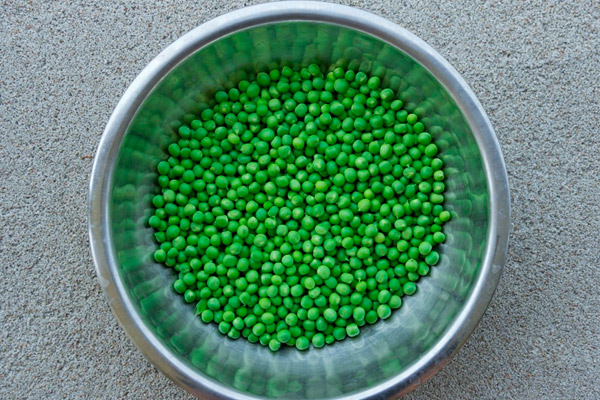
According to nutritionists, corn porridge is also undesirable for pancreatitis. The reason is the coarse fiber in the skin of the grain, which is very difficult to digest in the gastrointestinal tract.
If young "milk" corn is boiled for an hour to make it soft and digestible, then mature grain, from which corn grits are prepared, even with prolonged heat treatment remains quite hard even for teeth, not to mention the stomach and other digestive organs. And if you consider that corn, like millet, contains a lot of starch, then the ban on its inclusion in the menu of patients with pancreatitis becomes a necessity.
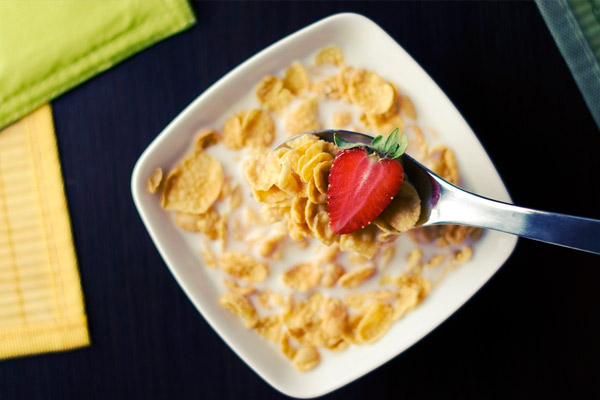
Caution should also be exercised with such types of grain as barley, pearl barley and wheat groats.
Barley (which is what barley groats are made from) is also very rich in carbohydrates, which are very difficult to digest when the pancreas is inflamed, requiring additional efforts from the diseased organ. But barley porridge does not contain a large amount of starch and coarse fiber, which means you should not completely give up this healthy dish when you have pancreatitis.
When a long-term remission occurs, indicating that the pancreas has restored its functions, barley porridge can be gradually included in your diet, but not more than 2 times a week. The porridge should be cooked for a long time so that it can then be easily turned into a kind of puree.
Nutrition for pancreatitis should be as healthy as possible, given that the number of products and dishes is limited. Frequently including dishes with low nutritional value in the diet does not make sense, because in this way we limit our body in the nutrients that it could receive if we built a slightly different diet.
Barley porridge is not considered particularly useful for pancreatitis. Like other porridges, it gives a feeling of satiety, but it is deceptive, because barley is poor in many vitamins and microelements necessary for the body. In case of illness, it is recommended to feed the body mainly healthy food.
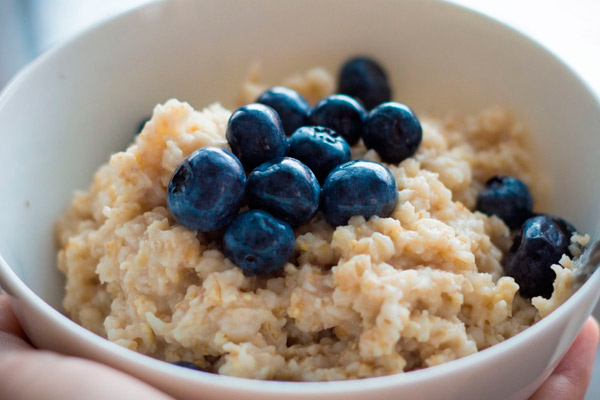
In general, it is illogical to refuse a tasty dish only because it is “useless”, especially since the diet still needs to be diversified. If you include pearl barley porridge in the menu a couple of times a week, it will not cause harm to the pancreas, but will make the table more attractive.
Wheat porridge is also not considered a particularly welcome guest on the table for pancreatitis. The high gluten content makes wheat dishes very filling. But they are not very useful, just like dishes with pearl barley. You can diversify your menu with wheat porridge, but you should not focus on it in the diet of a patient with pancreatitis.
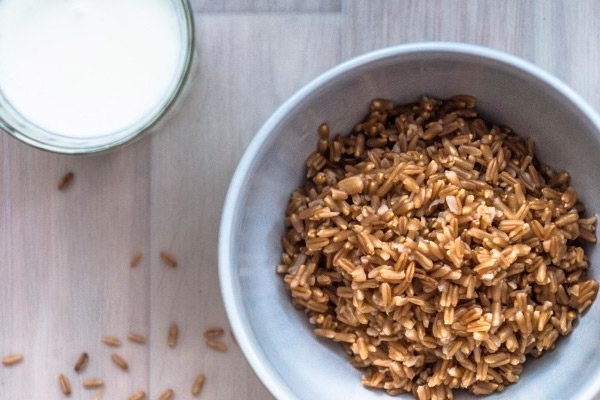
Porridges for various forms of pancreatitis and cholecystitis
So, pancreatitis, as an inflammatory disease of the pancreas, can occur in acute or chronic form, while the dietary requirements for these pathologies are somewhat different. Cholecystitis is an inflammation of the gallbladder, which often coexists with cholelithiasis, which is the cause of the disruption of the outflow of bile and its reflux into the pancreas.
Both diseases require diet. In particular, in both cases, doctors most often prescribe diet No. 5, which does not exclude cereal dishes, but even welcomes many of them. It can be said that porridges that are useful for pancreatitis will also be useful for cholecystitis. Another thing is that you need to know how to properly prepare a dietary dish, and also what porridges can be consumed in the acute and what in the chronic period of the disease.
Porridges for acute pancreatitis can be consumed after 2-3 days and their range can be expanded as the attack subsides. In the acute period, viscous semi-liquid porridges are mainly prepared, carefully boiling the cereals. The finished dish should resemble puree in consistency. Only in this case the pancreas will not have to strain to digest it.
The grain for porridge can be ground either before or after cooking. But in the latter case, you need to make sure that it does not form lumps during the cooking process, as often happens with grain that is too fine and resembles flour.
With pancreatitis, both regular viscous porridges and liquid milk-based porridges are allowed. However, milk porridges with pancreatitis should be introduced into the diet gradually. In the acute phase of the disease, only porridges cooked in water are allowed for 2 weeks. Salt and sugar are not added to dishes during the exacerbation period. Porridges cooked in a mixture of milk and water with the addition of a small amount of sugar or salt can be given starting from the third week of the disease. Whole milk is allowed to be used in porridges in the 3rd or even 4th week, when the condition stabilizes.
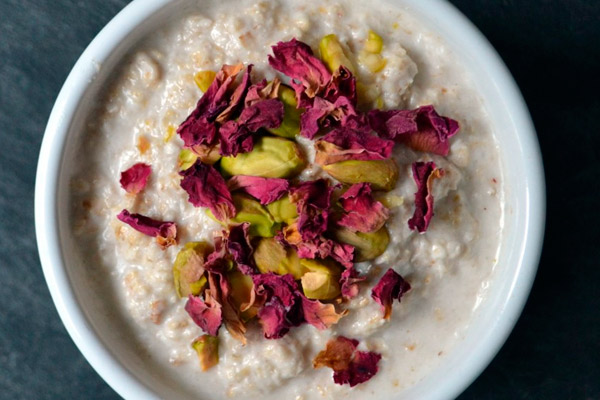
The same recommendations for preparing and eating porridge should be followed during an exacerbation of chronic pancreatitis, which most often occurs after eating fatty or spicy foods.
In the remission phase, it is allowed to eat not only viscous porridges cooked in water, but also other types of cereal dishes, such as casseroles and soufflés. In chronic pancreatitis, when the inflammation subsides, you can gradually include liquid milk and crumbly porridges in the diet, which will significantly diversify the menu without overloading the pancreas.
Healthy Porridges for Pancreatitis
Of all the variety of cereal dishes for pancreatitis, there are forbidden porridges, conditionally permitted ones, and those that are not only permitted but also useful for pancreatic disease. As we already know, corn, millet, pea porridge, and porridges made from other legumes are forbidden and undesirable. Wheat and pearl barley porridges also require caution in consumption; they should be included in the diet gradually, little by little, and rarely, when the condition stabilizes.
Another thing is healthy cereals, which should be present in the menu even in the acute period of the disease, because the body must receive the substances it needs. In addition, healthy cereals are so called not only because of their nutritional value, but also because of the effect they have on the pancreas and the gastrointestinal tract as a whole.
When to introduce certain types of porridge into the menu, you need to look at the patient's condition. Oatmeal, buckwheat, rice and semolina are great for making light soups and dietary porridges. Such porridges are healthy dishes for pancreatitis, which are introduced into the patient's diet even during an exacerbation. Moreover, if the patient's condition is considered satisfactory, porridge can be cooked for him both in water and using diluted milk, without waiting for 2 weeks to pass.
Another dish that is useful for pancreatitis and cholecystitis is flaxseed porridge. Flaxseed porridge, which is most likely a mucous decoction of flax seeds, which perfectly envelops the mucous membrane of the digestive organs, protecting them from irritation by aggressive enzymes. Since flaxseed porridge is liquid without grains, and does not require any strain from the pancreas, it can be introduced into the diet a couple of days after the exacerbation.
In case of chronic pancreatitis, flaxseed porridge is also useful because it can increase local and general immunity, and any chronic disease is a strong blow to the immune system, which is simply exhausted from the constant fight against the disease.
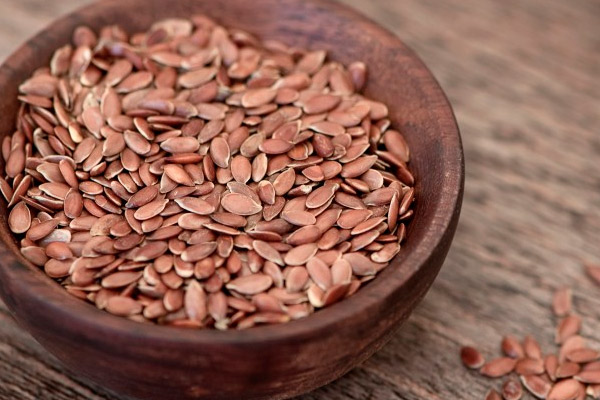
Let's now return to more popular porridges. So, buckwheat porridge for pancreatitis is considered one of the most useful and digestible. Porridge can be introduced into the diet as early as 4-5 days after the exacerbation. During this period, viscous porridge is cooked from buckwheat (as much as possible for buckwheat), having previously chopped the cereal or rubbed the finished porridge through a sieve.
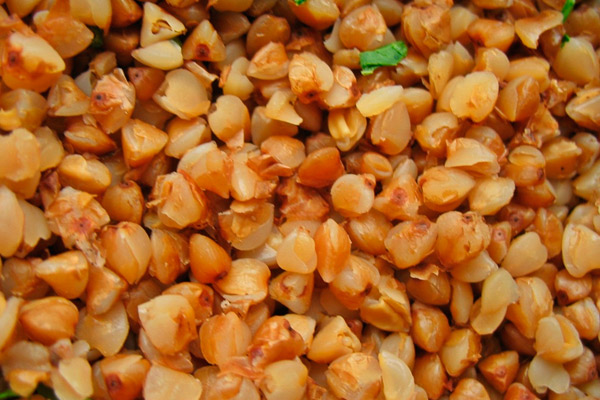
You can cook porridge in water or a mixture of water and milk, but you can't add sugar, salt or other seasonings to the porridge during the acute period. But during the remission period, you can season the porridge with a small amount of salt and sugar, jam, honey, butter (a little).
In addition to easily digestible fiber and protein, which is useful for pancreatitis, this porridge is also rich in vitamins, microelements and amino acids necessary for the body.
Oatmeal, useful for pancreatitis and other gastrointestinal pathologies, is considered an indispensable easy-to-digest dish. Yes, it is rich in fiber, but it is easily digested in the gastrointestinal tract, which allows you to use it as soon as the inflammatory process subsides slightly. It is one of the first to appear on the menu of patients with pancreatitis.
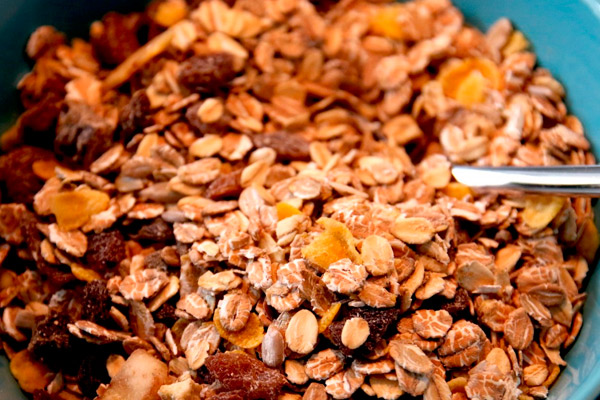
The porridge can be cooked from both oatmeal and Hercules flakes. At first, it should be a semi-liquid viscous porridge on water, without any additives. Like any other porridge for acute pancreatitis, oatmeal should be ground after cooking. Oatmeal or cereal can also be ground in advance in a coffee grinder or blender.
A little later, oatmeal can be cooked in water with milk added, and then in whole milk. This will help diversify the diet of patients and help restore lost appetite.
Patients should not be given porridge made from whole or insufficiently refined grains.
Oatmeal is a mucous dish rich in protein and easily digestible healthy vegetable fats. It coats the walls of the gastrointestinal tract, protecting them from the aggressive effects of digestive enzymes, and saturates the body with the components it needs, giving it the strength to fight the disease and emerge victorious. Oatmeal stimulates intestinal motility, which means it will help cope with constipation in chronic pancreatitis.
Rice porridge is also very quickly and easily absorbed in the gastrointestinal tract, so with pancreatitis it is given already on the 2-3 day of the disease. We are talking about porridge made from white polished rice. Brown unpolished rice can be introduced into the diet of a patient with pancreatitis only during a period of stable, long-term remission, because its hard scales can have an irritating effect on the gastrointestinal tract.
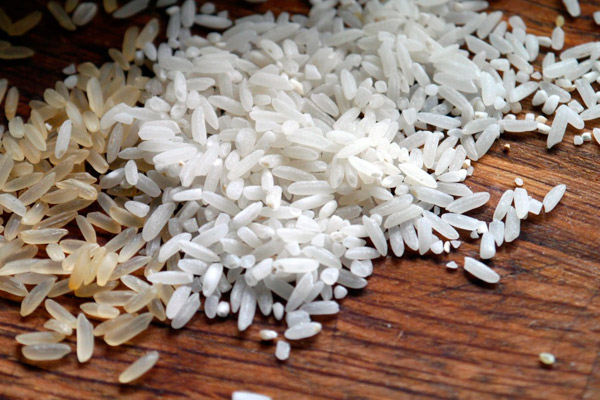
During an exacerbation, patients need to cook viscous mucous porridge or rice broth, which is considered no less useful. Loose rice porridge as a side dish for stewed cutlets and meatballs is allowed only during the period of remission.
What is the use of rice porridge? Firstly, it is a mucous dish with excellent enveloping and absorbent properties, which reduces the acidity of the gastrointestinal tract and reduces the symptoms of intoxication. Secondly, due to the large amount of complex carbohydrates, it gives satiety without overloading the pancreas. This is important already due to the fact that with pancreatitis, cholecystitis and other pathologies of the digestive organs, fractional nutrition is recommended, in which the portion size is noticeably reduced, which, if you are not used to it, can cause a feeling of constant hunger. Rice will not allow you to "starve".
The benefit of rice in acute conditions is also that it has a fixing effect, and in acute pancreatitis or exacerbation of chronic diarrhea is a more than common symptom. But in chronic inflammation of the pancreas, occurring with constant constipation, you need to be very careful with rice porridge. It is not recommended to include it in the menu more than 2-3 times a week.
Semolina porridge is, however, not only food, but also a medicine for pancreatitis. Semolina does not need to be ground, so it is much easier to prepare porridge for patients. This cereal does not need to be boiled for a long time, which means that it retains more vitamins than other porridges.
Semolina porridge easily passes along the entire gastrointestinal tract and helps cleanse the intestines of mucus and fats. It contains a large amount of protein, which is the building material of living cells, which means that the process of restoring pancreatic tissue thanks to semolina porridge will be faster and more effective. The almost complete absence of fiber seems to reduce its value for the digestion process, but at the same time it prevents dyspeptic phenomena, accompanied by colic and other unpleasant symptoms.
But no matter how useful semolina porridge may be for pancreatitis, it is not recommended to eat it constantly. The main thing here is moderation. You should not give preference to only one of the porridges that are useful during an exacerbation or during remission. All of them should be included in the diet of patients with pancreatitis. You need to alternate porridges so that one type of them is found in the weekly menu no more than 3 times. Each porridge is useful in its own way, and the body should extract the maximum benefit from them, which is possible only under conditions of complex, complete nutrition.
Porridge recipes for pancreatitis
Well, we have already become a little familiar with the theory of proper nutrition for pancreatitis, it is time to move on to practical exercises and learn how to cook porridges that are healthy for pancreatitis according to the recipes below.
Let's start with an unusual porridge that not everyone cooks, although they add flax seeds to salads, stewed vegetable dishes, pastries, desserts. We are talking about flaxseed porridge, which can be cooked in different ways for pancreatitis. And you don't even have to cook it.
- Flaxseed porridge recipe #1
Products:
- Flax seeds – 1 cup
- Water – ½ liter
Preparation: Pour boiling water over whole or crushed flax seeds, cover with a lid and leave to infuse for an hour, periodically shaking the container in which you are preparing the "porridge". During this time, the seeds will soften sufficiently and will not irritate the gastrointestinal tract. The liquid part of the porridge, containing most of the vitamins C, E, B and K, as well as useful microelements (zinc, manganese, selenium, etc.) can be given in the first days after an exacerbation. Porridge with seeds can be given at the end of the first week, 1 tbsp. before the main meal.
- Flaxseed porridge recipe #2
We prepare the porridge from the same amount of products, but instead of flax seeds we take the cake that remains after squeezing the oil. We insist the porridge for at least 40 minutes, cool it to a warm state and give it to the patient without adding any other components, as in the first case.
Next in line is semolina porridge, which is incredibly useful for pancreatitis. Having left childhood, in everyday life we cook this porridge without thinking about its consistency. But for a person with a sick pancreas, the consistency of the dish is a matter of principle, so we will give a recipe for semi-liquid semolina porridge, which is useful for pancreatitis, and tell you how to cook it without lumps.
- Recipe for healthy semolina porridge
Products:
- Semolina - a quarter cup
- Water - one and a half glasses
- Milk - one glass
Preparation: Dilute milk with water in a 1:1 ratio and bring to a boil. Dilute semolina with the remaining water and stir thoroughly. When the mixture of water and milk boils, remove the pan from the heat and pour in the semolina diluted with water, constantly stirring the porridge with a spoon or fork. After this, return the pan to the heat and cook the porridge for at least 2 minutes, remembering to reduce the heat and stir the dish being prepared. Turn off the heat, cover the porridge with a lid and leave to infuse.
Serve the porridge warm. In the acute period of the disease, semolina prepared in this way, if the patient's condition is satisfactory, can be introduced into the menu from the 4th or 5th day of the disease. 3-4 weeks after the exacerbation and during the remission period, you can add a teaspoon of melted butter, one or two spoons of honey or jam to the porridge. Or you can simply sweeten it with sugar.
Buckwheat is considered one of the healthiest and easiest to digest. It has everything: vitamins, minerals, amino acids, easily digestible fiber, protein. Buckwheat also has anti-inflammatory and bactericidal effects. It stabilizes blood sugar levels and improves the functioning of the liver and gallbladder, which makes it useful for cholecystitis.
Moreover, whole grain porridge is considered healthier than that made from groats or buckwheat flakes. However, after cooking such porridge, it will need to be rubbed through a sieve or chopped using a blender. Before cooking, it is recommended to sort out the grains from unpeeled grains and soak overnight.
During an exacerbation, prepare a semi-liquid porridge. To do this, add more water than usual when cooking. After cooking, drain the water. The boiled cereal is ground and diluted with the water in which it was boiled. Serve the porridge without salt or sugar. A week after the exacerbation, the porridge can be cooked not only in water, but also in milk diluted with water 1:1.
During the remission stage, any buckwheat dishes are allowed, including crumbly (1 part buckwheat to 4 parts water) and milk porridge. But nutritionists also recommend a slightly unusual way to treat pancreatitis using an unusual "porridge" that includes buckwheat and kefir.
- Buckwheat porridge with kefir recipe for pancreatitis
Products:
- Buckwheat (whole grain) – 1 cup
- Low-fat or 1% kefir – 2 cups (500 ml)
Preparation: Sort and clean buckwheat, pour kefir over it and leave to infuse for 12 hours (cook the dish at night). Divide the finished "porridge" into 2 equal parts. Eat one on an empty stomach for breakfast, and leave the second for the evening. Eat it a couple of hours before going to bed.
The treatment is carried out for 10 days, after which you need to take a break for the same period and repeat the course of treatment. It is recommended to undergo treatment of chronic pancreatitis with kefir-buckwheat porridge at least 2 times a year.
Rice porridge is also considered an indispensable dish for pancreatitis. Its astringent and absorbent properties are very useful for inflammation of the pancreas. During an exacerbation, viscous porridge is recommended, the recipe for which, according to diet No. 5, we will give. And during persistent remission, you can treat yourself to crumbly white rice, using it as a side dish for fish and meat dishes.
- Recipe for sticky milk rice porridge
Products:
Rice or rice groats – ¾ cup
Water – 1 glass
Milk – 1 glass
Preparation: Rinse the rice with warm and then hot water until the water becomes clear. Boil the water and add the washed rice. Cook the porridge until half-ready. Boil the milk, pour it hot into the porridge, stir and cook until the rice is soft. Pass the finished porridge through a sieve.
About 10 days after the exacerbation, you can add sugar (1.5 tsp), butter (1 tsp) and a little salt to the porridge.
Using the same recipe, you can prepare delicious rice porridge in a multicooker by adding all the specified products and setting the “Milk porridge” mode.
To get liquid milk porridge for ¾ cup of rice you need to take about 3 cups of whole or diluted milk.
And finally, oatmeal, which is recommended for all diseases of the digestive system, including pancreatitis. Such healthy porridge can be prepared from oatmeal or Hercules flakes, which, despite having fewer nutrients, are still more popular for pancreatitis than cereals. This is understandable, because oatmeal is easier to prepare and is better absorbed, saturating the body with vitamins A, B, B2, etc., as well as important microelements: copper, iron, potassium, zinc, boron, etc.
Oatmeal porridge is not only an easily digestible and tasty dish, but also an effective means of maintaining a healthy immune system.
- Oatmeal porridge for pancreatitis
Products:
- Oat flakes such as "Hercules" - 1 cup
- Milk diluted with water – 3 cups
Preparation: Put the milk on the fire and bring to a boil. When the milk boils, pour in the oats and turn down the heat. Cook the porridge, stirring occasionally and skimming off excess foam, until the flakes are soft. Depending on the type of oatmeal, this may take from 5 to 20 minutes.
When the porridge is ready, turn off the heat and cover the pan with a lid, letting the porridge sit for another 5-10 minutes.
This porridge can be given to patients with acute inflammation of the pancreas after 3 or 4 days from the onset of the disease. In this case, it will need to be chopped in a blender or use a sieve for this purpose.
When remission occurs, you no longer need to add water to the milk, and you can improve the taste of the dish with sugar or salt, adding a small piece of butter.
How to diversify your diet during pancreatitis?
Reading recipes for porridges recommended as dietary nutrition for inflammation of the pancreas, the reader will most likely become despondent. What can be tasty in porridge that is cooked without salt and sugar? Even if you use different cereals each time, this is unlikely to make the menu more attractive and the dishes more appetizing.
But nothing can be done, since it has come to inflammation of an important organ of the digestive system, then you will have to take care of yourself for a few days. This is not as difficult to do as it seems at first glance, because severe pain and nausea do not greatly contribute to the appearance of appetite. Food at this time is presented as a kind of medicine: it is not tasty, but it must be taken for health.
But after 7-10 days, even with acute pancreatitis, you can gradually add sugar, salt and butter to your porridge. The main thing is not to get carried away and not make things worse.
For variety in this period, porridge can be cooked either in milk or in water, alternating sweet and salty cereal dishes. And you can cook different porridges: oatmeal, rice, buckwheat, semolina, flax.
During remission, you can expand your diet, occasionally including barley and wheat porridge. During persistent remission, you can indulge yourself with a couple of spoons of pea puree "on holidays". There is no need to mash the porridge.
To make sweet dishes tastier, you can add a teaspoon of honey or jam to the porridge. As a tasty and healthy addition, you can use fresh or frozen berries and fruits, seeds, nuts (in limited quantities and only with stable remission due to coarse fiber).
A wonderful addition to milk rice porridge is pumpkin. This vegetable is considered an easily digestible storehouse of useful vitamins and minerals, it is not for nothing that boiled and baked pumpkin is introduced into the menu of patients with pancreatitis in the first days after an exacerbation. Pumpkin will not only improve and diversify the taste of rice porridge, but also make it more useful.
Pumpkin porridge for pancreatitis is very easy to prepare. Moreover, you can cook the porridge in different ways.
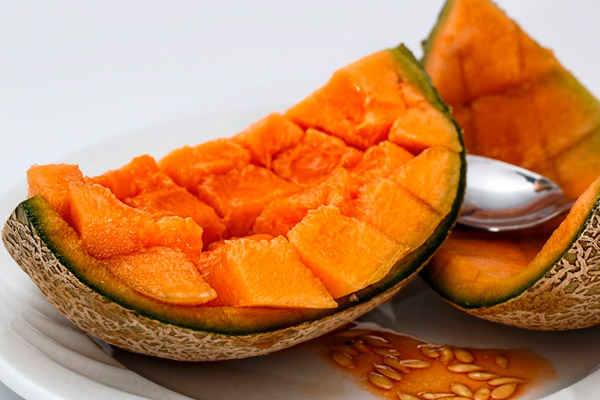
- Method #1. Peel the pumpkin, cut into small cubes, add water and cook for at least 15 minutes. Rinse the rice until the water is clear and add it to the water with the pumpkin. When the rice becomes soft, pour hot milk into the porridge (enough to make the porridge viscous) and bring to a boil.
Rub the finished porridge through a sieve or mash it with a spoon. Pumpkin itself is a sweet vegetable, so the porridge does not seem bland even without sugar. And it is useful to eat such porridge even during an exacerbation of the disease, after 2-3 days.
- Method #2. Boil the pumpkin cut into pieces in water. At the same time, cook the rice in milk in another saucepan. When the rice is almost ready, add the pumpkin to the porridge and stir. After boiling the porridge for a couple more minutes, turn off the heat.
There are many ways to cook pumpkin porridge. Semolina porridge with pumpkin will also be useful. In this case, it is better not to cut the pumpkin, but to grate it and stew it with a small amount of water. You can also bake pumpkin pieces in the oven, mash them and add them to the finished porridge before serving.
You can also add pumpkin to your oatmeal by preparing it according to one of the recipes described above.
It is important to understand that with the right approach to treating pancreatitis and following the dietary requirements, you can live with this disease, and quite happily. The main thing is to do everything to avoid exacerbation of the inflammatory process in the pancreas. And porridges for pancreatitis, as one of the elements of the diet, are quite capable of helping with this.


 [
[